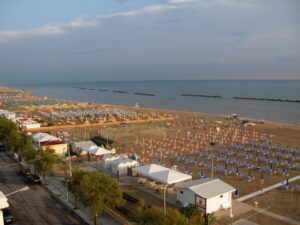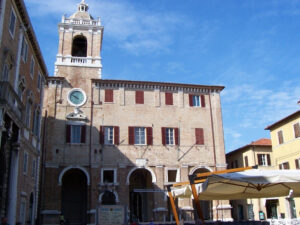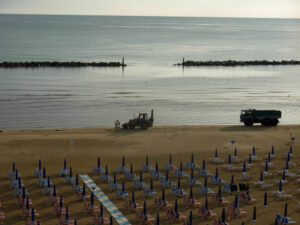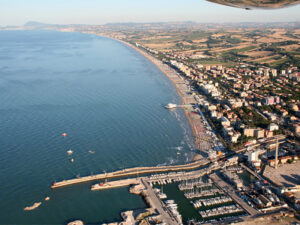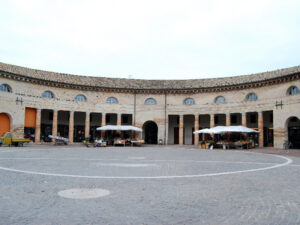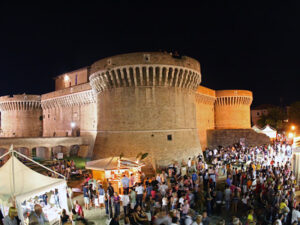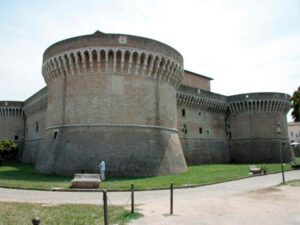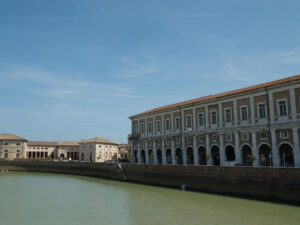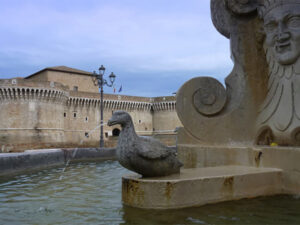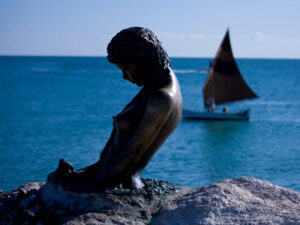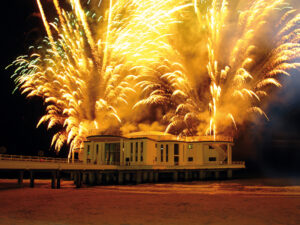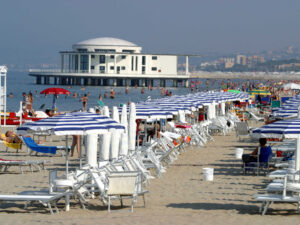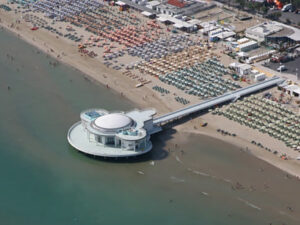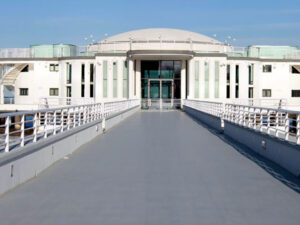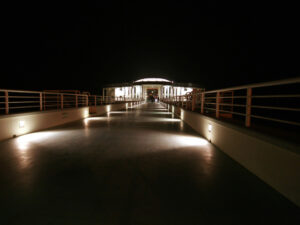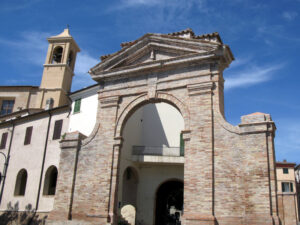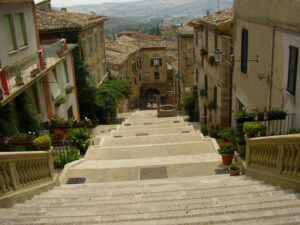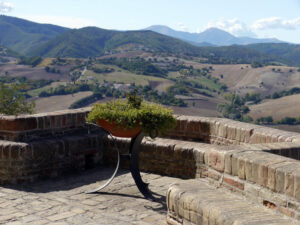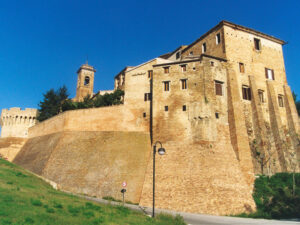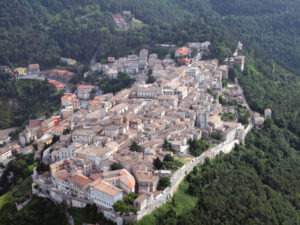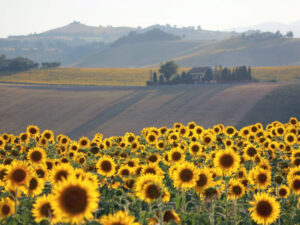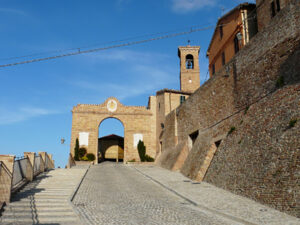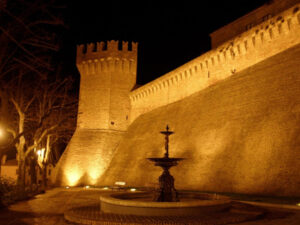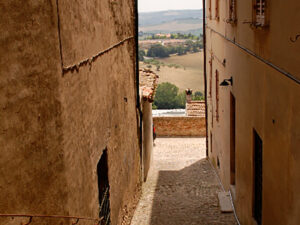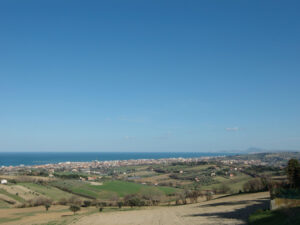SENIGALLIA
The great thing about Senigallia is that it does not have to promote one single element to be remembered or to rely on tourist potential.
It is like a meal that is so rich and nourishing that it would be impossible to pin point it to one single ingredient.
Of course, you can talk about the beautiful coastline , the lovely beach and the clean sea . However stopping there would not do justice to the other features of our town, which are not less attractive or stunning.
It would mean forgetting the splendour of our piazzas and monuments, the innate hospitality of our people, the wealth of the museums and the excellent cooking.
In other words , it would mean not fully recognizing the quality of life, in the shadow of the Rotonda, which is actually the most important aspect of a holiday made in Senigallia.
So, if we do really have to advise tourists who choose to spend their holidays on the velvet beach , we would recommend to allow plenty of time.
Because a holiday in Senigallia needs to be savoured leisurely, with the people you love most and allowing yourself to be wrapped in soft colours, just like a walk on the seafront at sunset.
LA ROTONDA A MARE
From the 1930s and 40s Senigallia became ever more famous as a tourist resort.
The Rotonda a Mare (circular pier) represents this trend, a famous monument, a true icon shaping the town’s identity and epitomizing its ambitions.
That structure, suspended between the sky, sea and land, was not just a precious jewel attracting tourists, but also it managed to harmonize in the best possible way, the values and tastes of contemporary society.
Like the arcades ” Portici Ercolani ” and later the market place ” Foro Annonario “, they were the ideal backgrounds for trade and commerce. In the same way, the Rotonda became the worldly haunt to show off new leisure fashions, the entertainment and physical fitness cults, loved by a growing mass culture wanting a place in the sun, even if only for a short holiday.
Since then and for several decades, the Rotonda represented many things contemporarily for the local people: a place for meeting and socializing, pleasant entertainment, the town’s symbol of cultural and artistic vitality.
It immediately became an important symbol of the town’s identity, as happens almost by magic, when modern influence manages to capture the roots and deepest feelings of a community.
In 2006 the Rotonda was reopened to the public after restoration and renovation work.
Because of its interesting architectural history and its strategic central position within Marche and Italy, the Rotonda has the chance to play an extremely important cultural role, stimulating potential artists of the area.
This venue is able to match and blend in the same space, entertainment functions, and events promoting tourism in the whole region. It is presented as a venue available to all and not just an elite group, to exhibit original proposals from all areas of contemporary culture.
AMONG VILLAGES AND CASTLE TOWNS
If you really want to appreciate the territory around Senigallia, we recommend a visit to the nearby hills and the little walled towns of the Misa and Nevola valleys. Take the main highway towards Pesaro. After Cesano, at the roundabout near the shopping centre, follow the signs for Monterado.
Monterado is the first stop, just a few kilometres away, on a hilltop. Visit the pine wood, and the seventeenth century stately building in the centre of town. Leave Monterado, and go towards Castel Colonna. On the left hand side you can admire the Adriatic coast from Senigallia to Pesaro.
Once you reach Castel Colonna , framed by its old town walls, stop for a breather in a medieval atmosphere, and enjoy the tiny streets and walkways.
Proceed to the next stop, Ripe. The castle embattlements bring to mind the original ancient fortified town.
Return down the valley, to Passo di Ripe and follow signs to Corinaldo. Only 5km away, on the right, a steep climb and you can admire the spectacular fortified walls of Corinaldo, probably the best kept of the whole region. In the Summer, many tourists, spending their holidays on the “velvet beach”, come for a pleasant evening walk in the old town centre. Before leaving Corinaldo, visit the birth place of Santa Maria Goretti.
The next stop is Castelleone di Suasa . On your right hand side is the valley of the river Cesano, which goes as far as Monte Catria. Before you reach the town, go and visit the archaeological site, of the ancient city of Suasa.
After Castelleone di Suasa, follow signs for Arcevia. On the way we recommend to visit Nidastore, Loretello, San Pietro and Palazzo and after many slopes and steep climbs you finally reach Arcevia, the invincible “Rocca Contrada”. Visit San Medardo Church with precious works by Luca Signorelli, Giovanni della Robbia and Ercole Ramazzani, then visit the Leopardi Gardens at the top end of the old town centre, with a spectacular view from the sea to the Apennines.
We are half way on our itinerary , now heading back towards Senigallia.
After a steep descent we recommend a trip to Avacelli, then coming back onto the main road SS360: the next stop is Piticchio, without a doubt the best kept of the castle towns of Arcevia.
Leaving Piticchio, follow signs for Serra de’ Conti . When you get there, park your car outside the old town walls and go for a relaxing walk around the alleys and narrow streets of the old town centre.
If you are interested in Verdicchio (local wine) vineyards, go up to Montecarotto (less than 4 kilometres from Serra de’ Conti), from here you can admire the blue of the Adriatic in the distance, and the green hills of Le Marche.
Next stop Barbara, founded about year 1000, its name is linked to Saint Barbara. Visit the parish Church of Santa Maria Assunta, with an important painting by Pomarancio.
Just 4 kilometres away is Ostra Vetere, which you can see from far away, silhouetted by its neo gothic bell tower of the Church, Santa Maria di Piazza. The town is built on terraces with streets connected by steps. The ancient archways facing the Misa Valley are of the fourteenth and fifteenth centuries.
From Ostra Vetere , go down onto the main road again, SS360 and continue towards Senigallia, until Casine. Here turn right and take the road to Ostra. Another medieval walled town, in fact, right in the centre, is the fortified civic tower built in the fifteenth and sixteenth century and the San Francesco parish hall, containing important canvases by Ercole Ramazzani.
Senigallia is now really close, but if you still want to savour the charm of these hills, allow yourself another detour to Belvedere Ostrense, enclosed by a Renaissance town wall, and Morro d’Alba, producer of one of the most appreciated wines of the region “Lacrima” named after the town. Morro d’Alba is also enclosed by its old town wall and has exceptional architecture. Not to be missed a walk on “strada della Scarpa”, a covered walkway all round the old town with beautiful views from its pentagonal towers.
Your visit is complete. After the green hills, dive into the blue of the “velvet beach” again!



